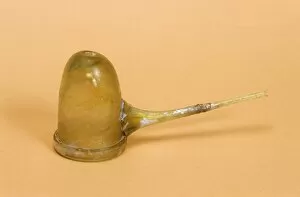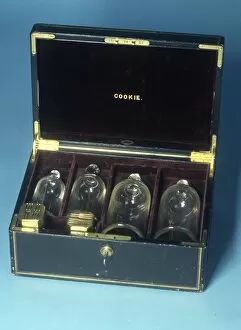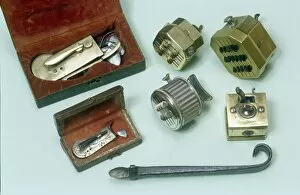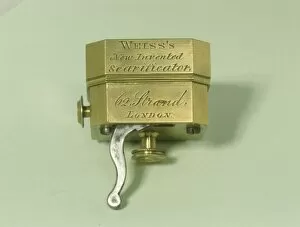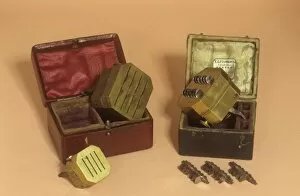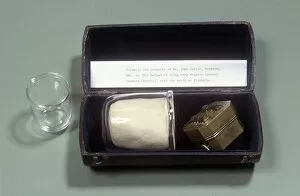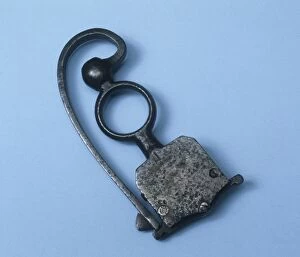Wet Cupping Collection
"Wet Cupping: A Historical Journey into the World of Traditional Healing Techniques" Step back in time and explore the fascinating world of "wet cupping
For sale as Licensed Images
Choose your image, Select your licence and Download the media
"Wet Cupping: A Historical Journey into the World of Traditional Healing Techniques" Step back in time and explore the fascinating world of "wet cupping, " a traditional healing technique that has been practiced for centuries. This captivating method involves using various tools, such as cupping sets and mechanical scarificators, to create controlled suction on specific areas of the body. One intriguing artifact from the 19th century is the Cupping set (C017 / 3568), which showcases the craftsmanship and ingenuity of that era. Its intricate design allows for precise application, ensuring optimal results during this therapeutic procedure. Another noteworthy tool is the Mechanical scarificator (C017 / 3563), also from the 19th century. This device was used to make small incisions on targeted areas before applying cups, enhancing blood flow and stimulating healing processes. The Crude cupping glass (C017 / 3583) takes us even further back in time to the 17th century when wet cupping was still evolving. Despite its simplicity, this ancient glass demonstrates how early practitioners ingeniously adapted their techniques to achieve desired outcomes. As we delve deeper into history, we encounter more remarkable artifacts like Cupping sets (C017 / 3575) and (C017 / 3589). These sets exemplify advancements made in materials and designs during the 19th century, reflecting an ever-growing understanding of human anatomy and physiology. Mechanical scarificators (circa1780-1900 C017/3562) were another significant innovation in wet cupping practices. These devices featured multiple blades that could be adjusted according to individual needs or preferences—showcasing how technology played a role in refining this ancient art form over time. Intriguingly named Six blade scarificator (20th-century C017/3571) offers insights into modern adaptations while honoring historical roots.



